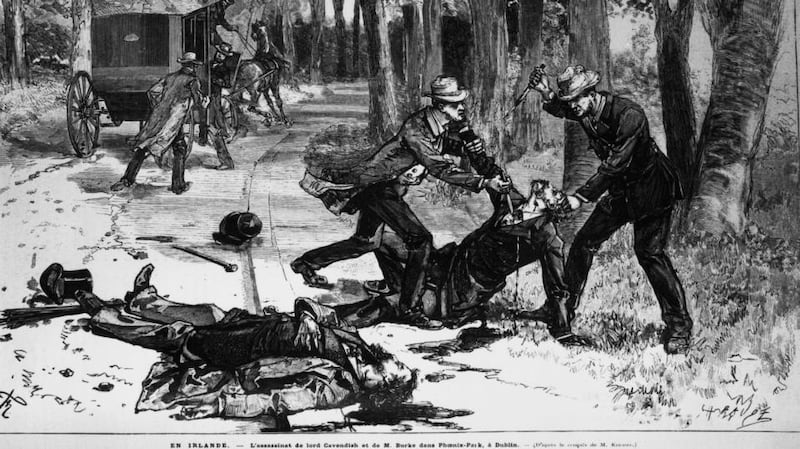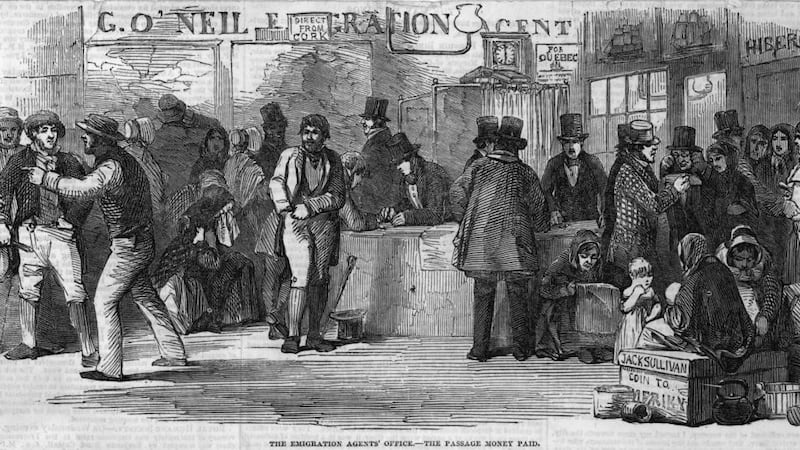In February 1844, not long before The Famine, British Tory MP Benjamin Disraeli offered this brief overview of Ireland: “A dense population, in extreme distress, inhabit an island where there is an Established Church, which is not their Church, and a territorial aristocracy the richest of whom live in foreign capitals. Thus you have a starving population, an absentee aristocracy and an alien Church, and, in addition, the weakest executive in the world. That is the Irish question.”
It was a damning summation of Ireland under the 1800 Act of Union and there have been no shortage of books dissecting those themes, but it was not the only Irish question. This stimulating and original book asks us to think about other Irish questions during that period and the nature and forms of the power exercised, beyond just the coercive kind.
What constitutes the “state” during this period, is, Ciaran O’Neill contends, poorly understood and the question of its legitimacy “largely unanswered or elided”.
There has been much focus on oppression, resistance and the “parliamentary tradition”, but what about those who peopled Union Ireland and were smothered or empowered by it at a time when the island was “trapped in a palliative state” in the sense of being sustained but not cured of its ills?
O’Neill is not denying colonial subjection or the perception of Ireland and its people by its overlords as inferior, but is especially interested in those who collaborated, enabled and operationalised government in Ireland, both outsiders and insiders. Was there an agency of the people lost in historical narratives excessively focused on parliamentary or high politics?
The book revealingly dissects governing structures locally and nationally; the boroughs and the “almost comically inefficient system of town governance”, the petty court sessions, the poor law system and the internal dynamics of the administration in Dublin Castle (“the deep state”, filled with bureaucrats, which has often been neglected beyond its figureheads), but also the Irish office in London about which precious little has been written hitherto.
There is also a focus on securing the state – the harbours, barracks, Insurrection Acts and the web of military outposts – with fascinating detail on Martello towers, each of which cost about £175,000 to build; the 26 of them, a consequence of the Napoleonic wars, were “never tested and were obsolete within the decade”.

There were also ordnance surveys and mapping Ireland for tax and security reasons, ethnographic surveys, the railway and canal networks (“conduits of people, freight and news”), the retention of postal traffic control in London and the inability of civil society to gain any traction in policymaking, including those engaged in the empirical and statistical movement, as it was ignored by the disinterested state.
There is an admirable determination to place these themes in a wider context (the experiences of, for example, India and the Habsburg Empire) and the more recent preoccupations of Irish historiography find space in the material on containment and contagion which were “rife within prison theory in Ireland.”
Ireland’s leading penologist Walter Crofton and the mid-century prison chaplain Charles Gibson (“I never saw the horses work better than these men,” he observed of Spike Island) were preoccupied with “the habits of industry”. The absentee landlords are also followed, including to their European spa resorts, as O’Neill makes much of the “transnational circulation of the Irish elite”.
He explores the trope of the “ungovernable Irish”, reminding us that in being constantly told of their disloyalty, some embraced that accusation and “began to reproduce a story they were willing to hear”. There were also the “Irish ungovernables within the culture itself” including the Mincéirí (Travellers) and women activists, and O’Neill draws on some of the literature of the “new woman” writers of the 1890s.

As for the Irish abroad (7.5 million people left the island from 1815-1922), he challenges us to think about the diaspora as a “settler colonial one”, more likely to move to the US, Canada or Australia.
These migrants were not uniformly victimised; and he highlights the “Indigenous peoples whose lands and rights were destroyed or stolen, so that the Irish could survive”, the Irish benefiting from their white skin. For those who remained at home, emigrants’ remittances meant the west of Ireland, far from being remote or backward, was considerably globalised.
The book is dense with the theories of power (“biopower, governmentality, language and hegemony”) and multiple references to such scholarship can overwhelm. It is also difficult to make what is essentially a series of essays always cohere effectively to do justice to the aim of providing “a mixed method social and cultural history of ‘being’ in Union Ireland”, but O’Neill deserves considerable credit for broadening the framework of interpretation for the 19th century, and stylishly illuminating new and often overlooked source material.
Diarmaid Ferriter is professor of modern Irish history at UCD. His latest book is The Revelation of Ireland 1995-2020 (Profile Books).















